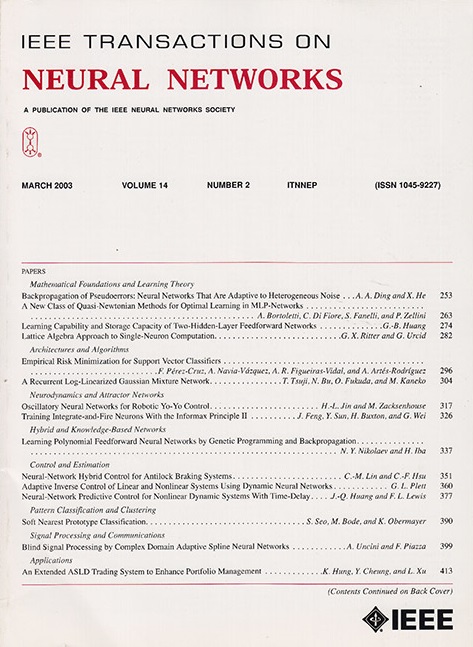MDFA: A Quantitative Framework for the Analysis of Multimodal Facial Esthetics
IF 8.9
1区 计算机科学
Q1 COMPUTER SCIENCE, ARTIFICIAL INTELLIGENCE
IEEE transactions on neural networks and learning systems
Pub Date : 2025-06-18
DOI:10.1109/TNNLS.2025.3570389
引用次数: 0
Abstract
In the era of big data, the problem of facial beauty prediction (FBP) has been addressed using a combination of deep learning and esthetics based on data and models. Most existing methods are based on 2-D unimodal information processing. Owing to the high cost of 3-D data acquisition equipment, studies on the use of multimodal features of 2-D and 3-D for esthetic evaluation are scarce. Moreover, most existing methods are based on self-built 3-D datasets, which are limited to practical application scenarios of 2-D facial images. This study proposed a label distribution-based multimodal facial esthetic analysis framework (LDMFE). The LDMFE performed facial esthetic evaluation by combining 2-D and 3-D information following the process used by the human brain to conduct the 3-D esthetic evaluation. FBP was performed by extracting facial depth structure information using a depth information extraction network, DIENet, which comprises a facial structure perception layer (FSP-Layer) and an attention decision block (AD-Block). Furthermore, to ensure a high degree of agreement between the predicted label distribution of the network and the true distribution, a simple and efficient distribution measurement loss function calledMDFA:多模态面部美学分析的定量框架
在大数据时代,基于数据和模型的深度学习与美学相结合,解决了面部美丽预测(FBP)问题。现有的方法大多基于二维单峰信息处理。由于三维数据采集设备的高成本,利用二维和三维多模态特征进行美学评价的研究很少。此外,现有的方法大多是基于自建的三维数据集,局限于二维面部图像的实际应用场景。本研究提出一种基于标签分布的多模态面部美学分析框架。LDMFE按照人脑进行三维审美评价的过程,将二维和三维信息结合起来进行面部审美评价。采用深度信息提取网络DIENet提取面部深度结构信息,该网络由面部结构感知层(FSP-Layer)和注意决策块(AD-Block)组成。此外,为了保证网络的预测标签分布与真实分布高度吻合,提出了一种简单有效的分布测量损失函数${\mathcal {L}}_{\text {WD}}$。与基于标签分布的FBP损失和最新FBP损失相比,${\mathcal {L}}_{\text {WD}}$更加稳定有效。使用三个数据集对LDMFE的性能进行了评估。实验结果表明,LDMFE具有最先进的性能。
本文章由计算机程序翻译,如有差异,请以英文原文为准。
求助全文
约1分钟内获得全文
求助全文
来源期刊

IEEE transactions on neural networks and learning systems
COMPUTER SCIENCE, ARTIFICIAL INTELLIGENCE-COMPUTER SCIENCE, HARDWARE & ARCHITECTURE
CiteScore
23.80
自引率
9.60%
发文量
2102
审稿时长
3-8 weeks
期刊介绍:
The focus of IEEE Transactions on Neural Networks and Learning Systems is to present scholarly articles discussing the theory, design, and applications of neural networks as well as other learning systems. The journal primarily highlights technical and scientific research in this domain.
 求助内容:
求助内容: 应助结果提醒方式:
应助结果提醒方式:


